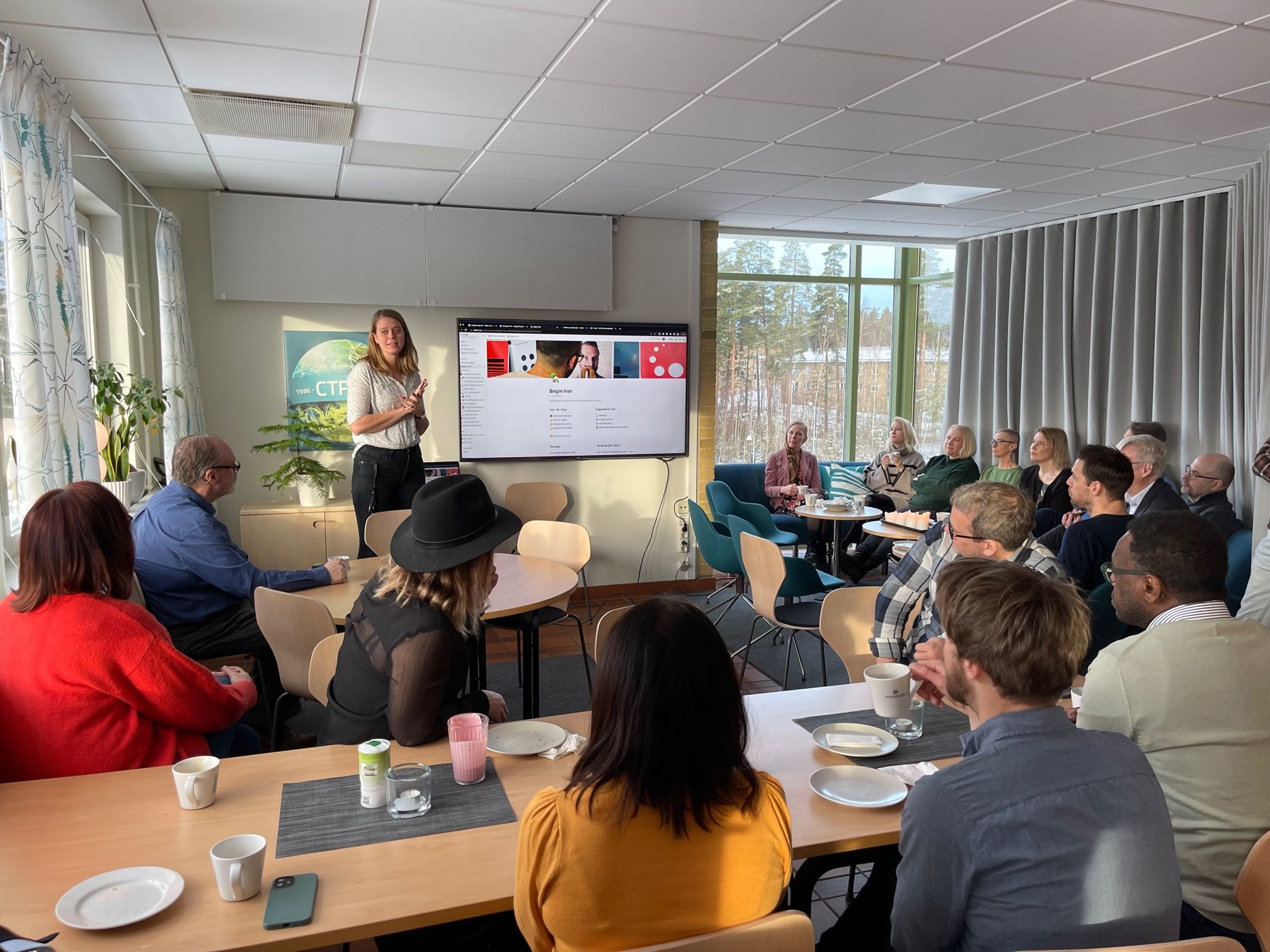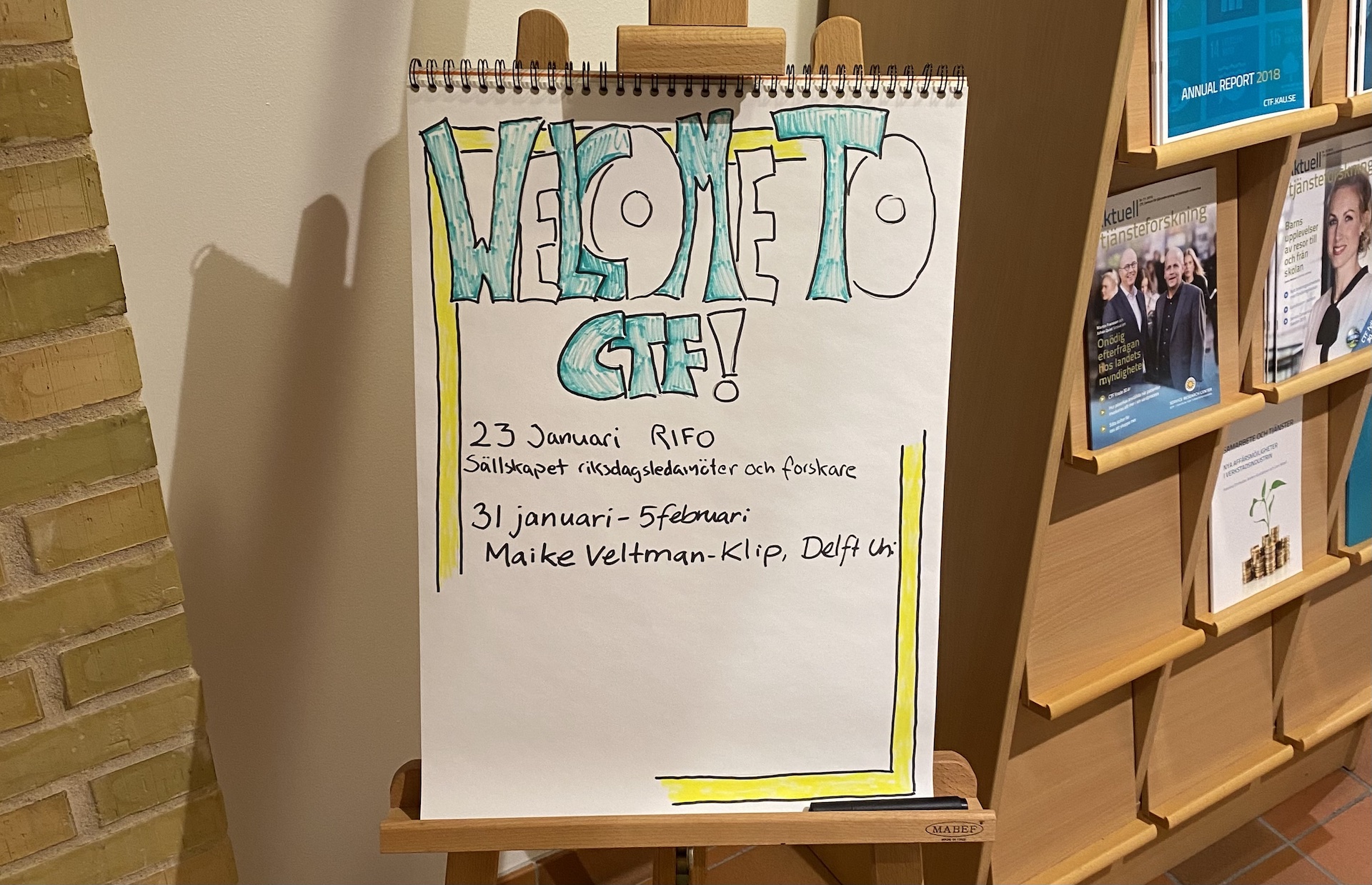At the entrance to the coffee room was a large sign “Welcome Maike from Delft! I was given my own key to a wonderfully quiet study and everyone made time for me. I am talking about my week at Karlstad University, where I visited the Service Research Center.
In this blog, a travel report. Just don’t expect exciting stories of mountain climbing and picturesque restaurants at this point: it’s a first step into the academic world of public services. Although, of course, mental mountains are also climbed here and the Swedish coffee rolls are delicious.
Center för Tjänsteforskning
I visited Karlstad University for two reasons. My supervisor Jasper van Kuijk is living in Karlstad since last year, so we were able to work a week together in a focused way. We created a table of contents for the dissertation which should be on the shelf in a few years. Each chapter can become a paper that we will be writing in the coming years.
Are you curious about this table of contents and do you want to provide feedback on it? In my monthly newsletter, coming out next week, I will share it.



The other reason for the visit was CTF, the university’s research center that conducts multi-disciplinary research on service delivery and everything around it. It also employs a number of researchers focused on the public sector. Perfect!
Several of them made time to introduce me to the theoretical world behind services, what they are and how we can look at them from different perspectives.
So practical
My strength is that I come from practice, have a large network and that you all are going to help me (right?). A big disadvantage is that I come from practice and therefore I still am very much stuck in practice. This adventure started out of practical frustrations, but in the end it is also about contributing to the theory. But which theory? And how do I do that?

Fortunately, I was able to ask all those ‘dumb’ questions in Karlstad. For example, to Per Skålen who told me at length about what services are and service-dominant logic. And that I should definitely read Stephan Osborne’s book Public service logic (ordered immediately!).
The most common characteristics for services are abbreviated IHIP: Intangibility, Heterogeneity, Inseparability, and Perishability. In Dutch: diensten zijn niet tastbaar, ongelijksoortig, onafscheidelijk en vergankelijk.
The student finance, for example. There is certainly a tangible aspect to it, money, but the whole service is not necessarily tangible. It can take a different form for everyone, some have longer travel rights, others not. You can’t pull parts of the service apart, one affects the other. And it is perishabil: you cannot ‘save’ your visit to MijnDUO, so to speak.
Choosing a lens
I also spoke with Johan Quist who primarily does research with and for Swedish government organizations. And I talked to Jakob Trischler who later sent me two articles on design for experience that I like very much. He advocates examining government services from three lenses: the macro, meso and micro lens. Which fits very well with my timeline experiment, which I shared in the blog about the big plan, of looking at the inside of government organizations from both collective values and individual experiences.



Back in the Netherlands, packages of new books were already delivered. As I put them on the shelf to take out one by one later, I also noticed the books I read before. ‘Hey, this book also refers to that SD logic. I just read over that last time!’ So you understand that I am already rereading, haha.
In short: plenty to do.
In the next blog, I talk about public service logic. In fact, I just finished that book and it fits very well with how I want to approach this research.
Read along?
Then you might like these reading tips:
- Osborne, S. (2020). Public Service Logic: Creating Value for Public Service Users, Citizens, and Society Through Public Service Delivery (1st ed.). Routledge.
- Trischler, J., & Charles, M. (2019). The Application of a Service Ecosystems Lens to Public Policy Analysis and Design: Exploring the Frontiers. Journal of Public Policy & Marketing, 38(1), 19-35.
- Jakob Trischler & Jessica Westman Trischler (2022) Design for experience – a public service design approach in the age of digitalization, Public Management Review, 24:8, 1251-1270.
- Downe, L. (2020). Good services: how to design services that work. Bis Publishing.
- Stickdorn, (M), Schneider, (J), et al (2016). This is service design thinking: basics, tools, cases. Bis Publisher.
